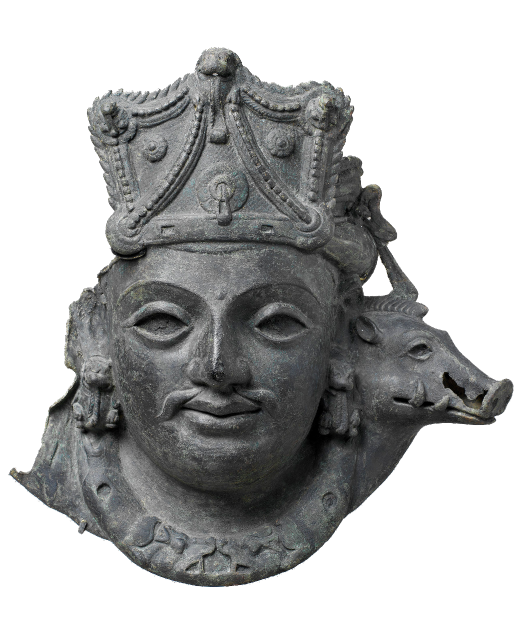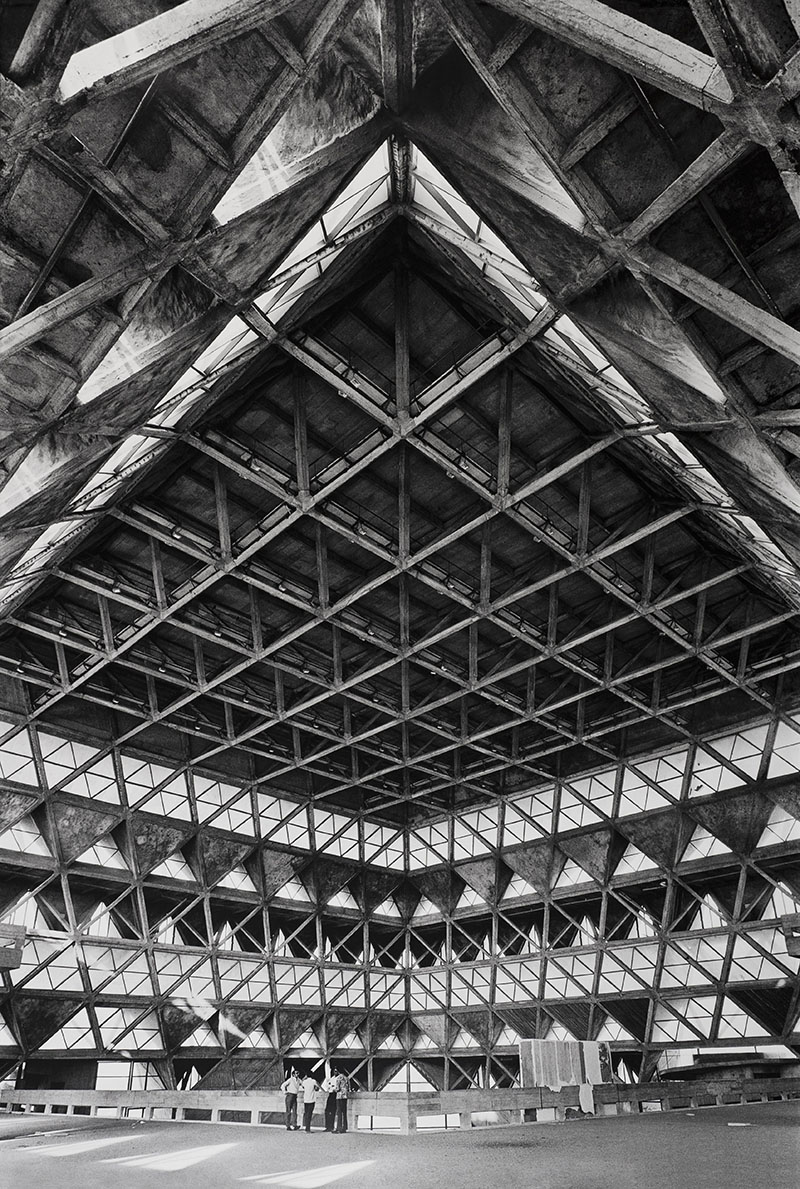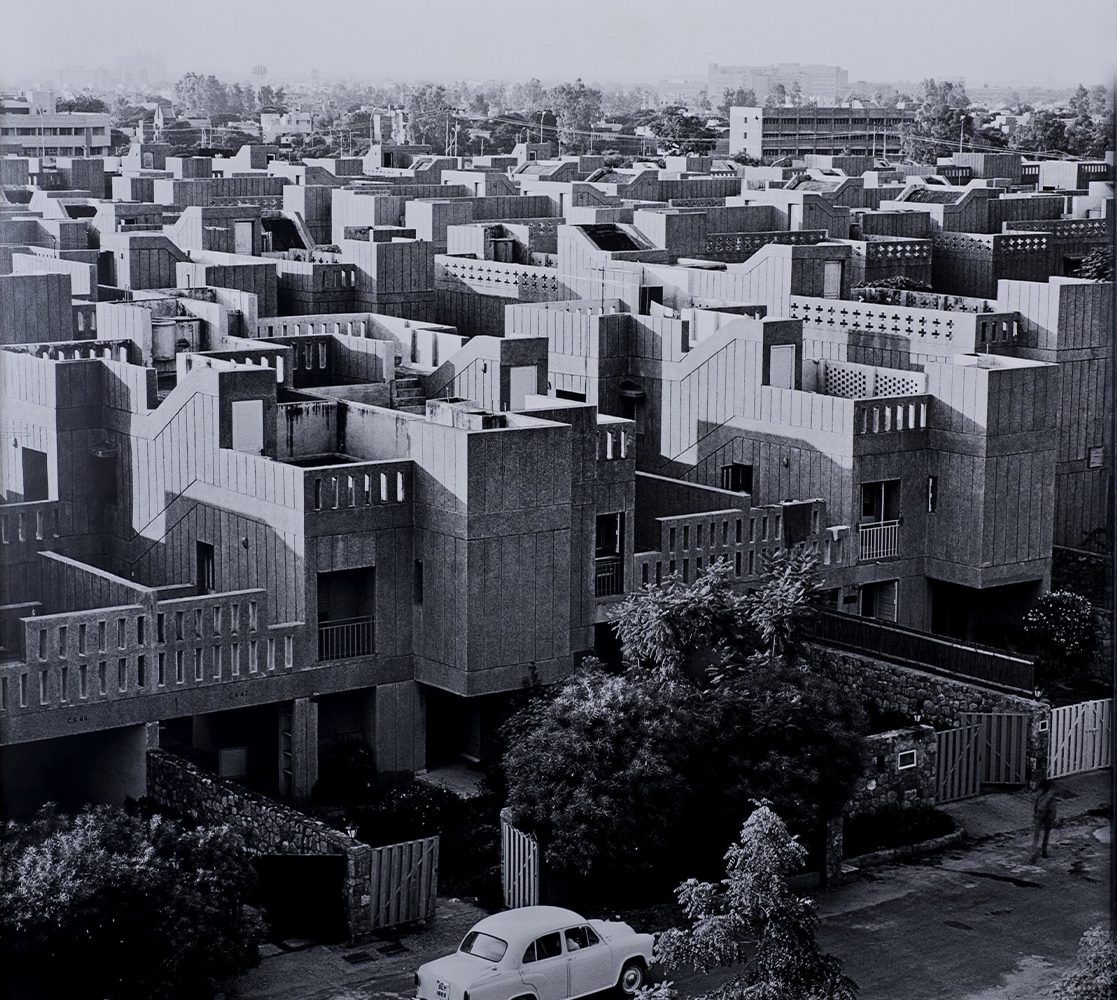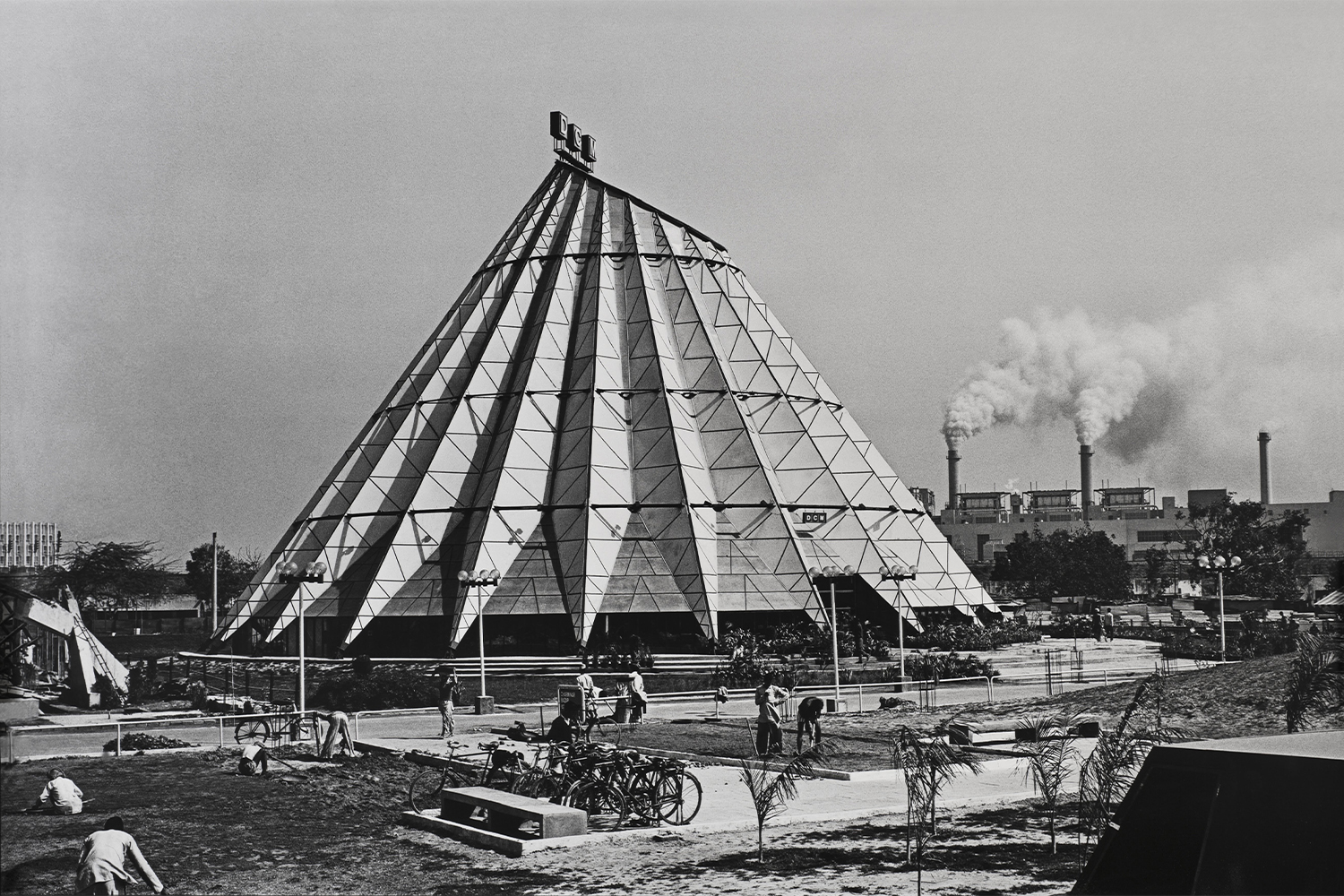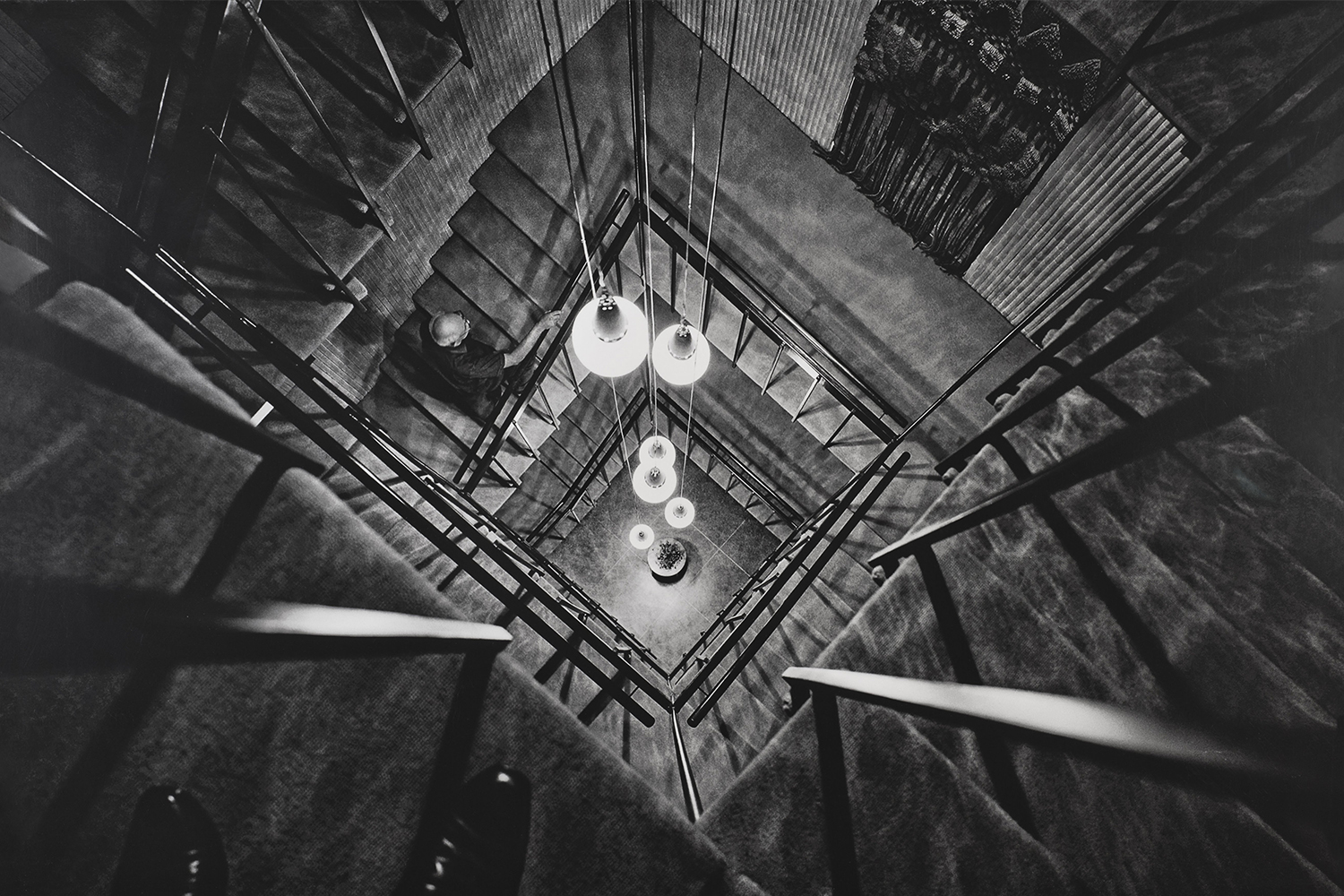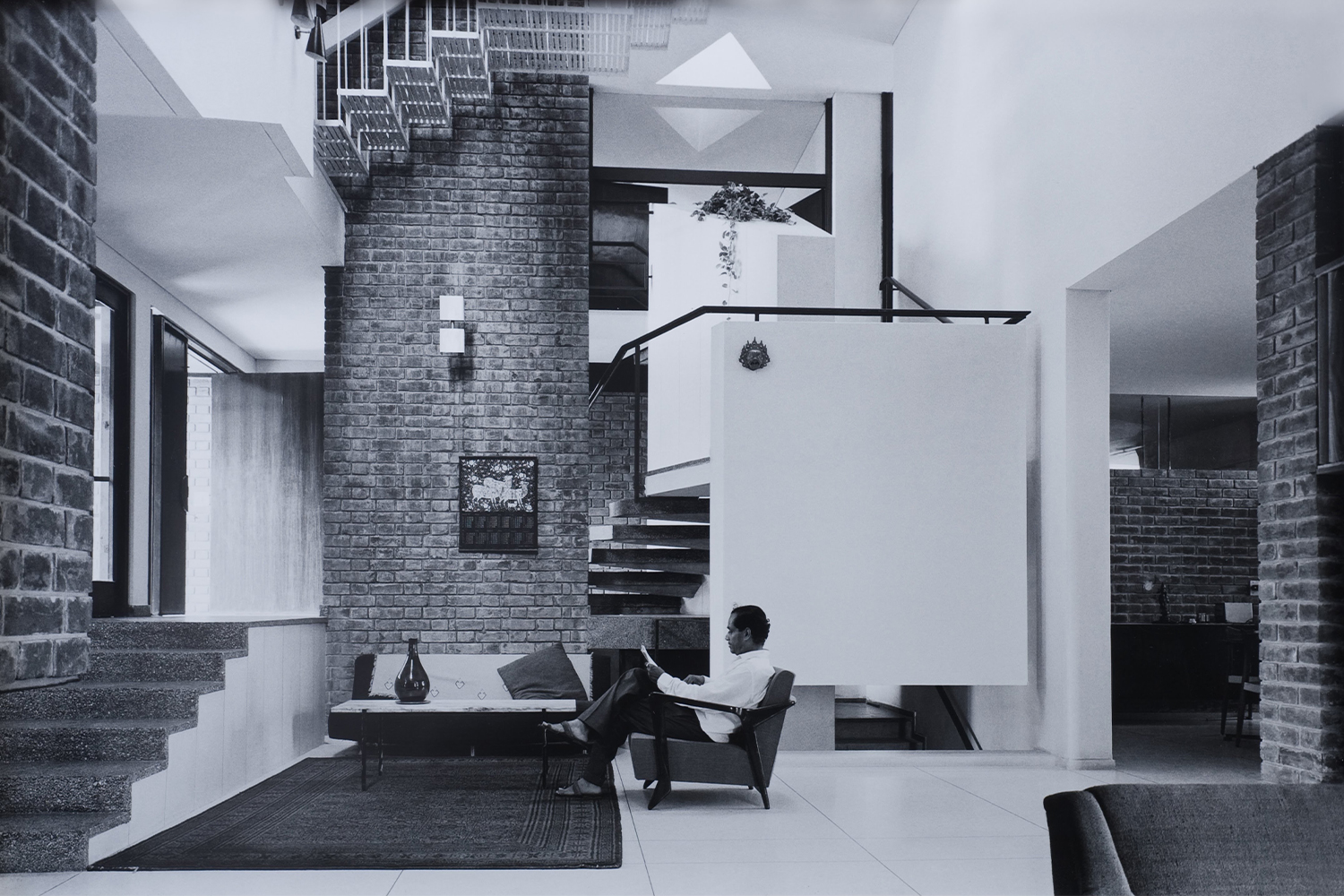ARTICLE
Madan Mahatta
His association with these architects enabled him to understand formal aspects of these buildings, as well as light’s projection and illumination in the structures. Photographing with a Linhof camera, using a medium-format film and an extremely wide lens, he could take pictures with a clear, undistorted perspective that captured an expansive sense of the space. Following the conventions of architectural photography, his photographs do not have people in them and many of them are captured at a diagonal, incorporating the foreground which accentuates the spatial depth. Mostly shot in black and white, his photographs bring out stark contrasts in light and form. He was sensitive to the modernist visual vocabulary since in his photographs the emptiness of buildings swells to magnify their monumentality and bold geometric forms are cast in an even, flat light. The interplay between the surface and light ultimately holds these images between architectonics and spectacle, laboured processes and definitive finesse.
He was regularly commissioned by architects, industrial corporations such as Escorts and by magazines such as Inside Outside. While he specialised in architectural views, he also worked across genres throughout his career. He photographed art forms such as dance and theatre, product photography, portraits and panoramic scenes. Among these, a few notable photographs include, MF Husain painting a billboard, Stein walking up the stairs of the Ford Foundation Office and the Gandhi family (Indira, Sanjay, Rajiv and Sonia) sitting in the front row at a Pierre Cardin fashion show. He captured many photographs of Connaught Place, including an evocative image of the streets flooded with rainwater and full of Chevrolet, Fiat and Ambassador cars. In 1961, he photographed Queen Elizabeth’s visit to India, where she can be seen waving to the crowds assembled on the roadsides and the balconies. He also photographed many architectural models and maquettes of projects that remained unrealised.
Despite a prolific career, his work was seldom seen outside of his immediate circle or beyond his commissions. Rarely exhibited during his lifetime, his work received attention with an exhibition of his architectural photographs, Delhi Modern, curated by the photographer Ram Rahman in 2012. Photographs from Delhi Modern have consequently been included in several exhibitions, among them are Illuminating India: Photography 1857–2017 at Media Space, Science Museum, National Media Museum, London (2017–2018); Stretched Terrains, Kiran Nadar Museum of Art, New Delhi (2017); and Urban Landscapes — Indian Case Studies, The British School, Rome (2012). His work is widely collected and is part of public collections such as the Kiran Nadar Museum of Art (New Delhi, India), M+ Museum (Hong Kong, China), Pier 24 (San Francisco, USA) and the Walker Art Centre (Minneapolis, USA).
Mahatta passed away in March 2014 after a three-year-long battle with cancer.
Bibliography
Our website is currently undergoing maintenance and re-design, due to which we have had to take down some of our bibliographies. While these will be re-published shortly, you can request references for specific articles by writing to hellomapacademy@map-india.org.
